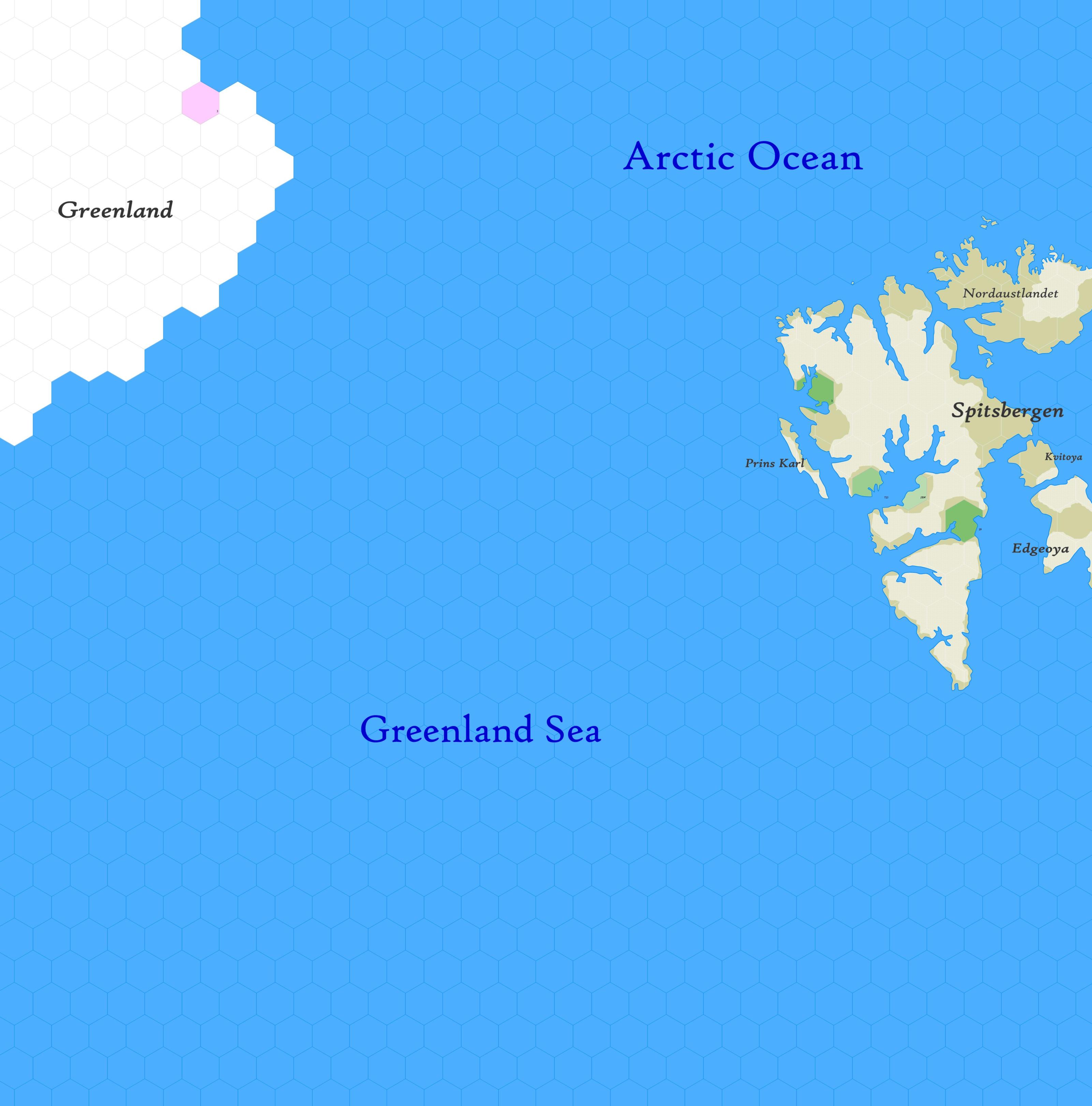Map A.01 - Greenland Sea
Incomplete map. Arctic region reaching from 82.34°N south to 72.51°N, much of which has never been penetrated by civilised shipping beyond the southern tip of Spitsbergen, which has been seen but never explored. Details about its residents are unknown.
Hexes are 20 miles in diameter. Total area depicted equals 366,450 sq.m.
Features
Arctic Ocean
An almost completely landlocked body of water surrounded by the continents of Europe, Asia and America. The map shown gives the best possible access to the ocean. The ocean is a vast waste of pack ice, formed during the autumn, winter and spring months. Glacial ice, the source of icebergs, orginate largely on Greenland. Icebergs, however, comprise only about one third of the ice content of the Arctic Ocean, and are found mainly in the Greenland Sea. None of the sea has been charted, and is unknown to civilisation. Known life includes seals, polar bears, whales, ice toads, remoraz and white puddings.
Greenland Sea
A part of the Atlantic Ocean and connects to the Arctic Ocean by the Fram Strait, between Greenland and Spitsbergen. A mythological ridge exists below the surface of the Fram Strait, one of the many places rumoured as the lair of the Great Leviathan. The shallowest depth of the sea is more than 300 fathoms. Polar ice fills this portion of the Greenland Sea most of the year, but it's exact position depends on the winds. In spring the outer edge of the pack ice follows a general line crossing the bottom of the map shown. In June and July the ice moves farther westward, with its breadth off the east coast of Greenland varying from year to year.
Spitsbergen
An unexplored archipelago in the extreme north of the world, comprising five major islands and many smaller ones. It measures approximately 250 mi. from east to west; its northern edge has never been observed. The topography is highly broken with the pointed mountain peaks — spits bergen — reaching to above 5,000 ft. Much of the surface of the larger islands is covered with tremendous glaciers which reach down to the ocean, where their ice calves into icebergs. The coasts are indented by deep fjords. Rivers rush in the summer, when the snow lying at elevations up to 1,600 ft. melts; however, these are small and of little importance. The greater part of the limited precipitation reaches the sea in the form of glacier ice. The vegetation is of the tundra range, principally mosses, with some flowering plants and a few dwarf trees. The climate is arctic, with brisk summer temperatures.
Discovered by the Norse in 1194 A.D. and rediscovered in 1596 by the Dutch navigator Willem Barens, the islands are visited yearly by whalers and sealers. Ordinary fauna include walruses, polar bears, reindeer and foxes. Various birds, including the eider duck, ptarmigan, gulls and the snowy owl frequent Spitsbergen.
See Also,
Sheet Maps
- East: East Svalbard
- SEast: Lofoten
- SWest: Iceland
- West: High Greenland
